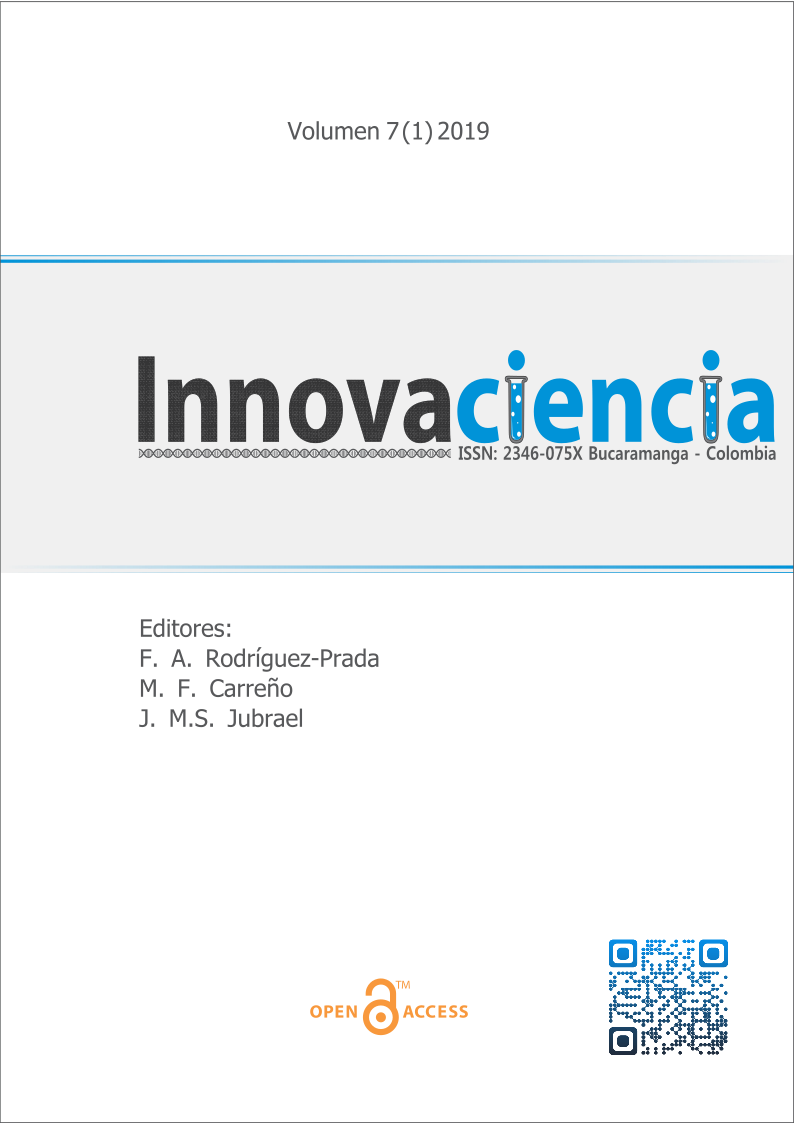Evaluating a Self-Charging Electrostatic Dust Shield for Solar Cell applications in Baghdad Outdoor Weather
DOI:
https://doi.org/10.15649/2346075X.788Keywords:
dust removing, electro-dynamic discharge, clearing factor, solar cellAbstract
Introduction: It is well known that the biggest problem facing the utilizing of solar cell Panels in Baghdad is the unpredictable dusty weather through the days of year. This big problem is not easy to overcome due to the frequent dust accumulations and the high cost of cleaning and other maintenance problems. Dust problems are increasing due to global warming. In Baghdad city, where solar radiation is intense and available almost throughout the year, Deposition of dust on the panels could severely minimize solar-to power output efficiency. There are many methods for dust removing from surfaces like the natural dust removal of wind, mechanical dust removing, super-hydrophobic on solar panel surface, and the electrostatic method which is adopted in this work. The dust particles will be charged statistically by rolling on the surface of the solar panels they will have the same electric charge and the electrostatic forces between them are repulsion. Hence, the dust particles will float away from the solar panels. Materials and Methods: A self-charging transparent conductive glass is prepared by spraying a thin film (141 nm thickness) of a Tin dioxide (SnO2) solution on a glass substrate (12x12 cm2). The dust shield is connected to an electronic charging circuit. The shield is located on the top of a silicon solar cell. The novel idea is that the shield is electrically supplied by the solar cell itself whereas D.C. current from the solar cell itself is used to charge the conductive glass, which is located on the top surface of the cell. Results and Discussion: A test was done for dust removing from a Silicon solar cell by electrostatic repulsion method, considering matching the spectral response region of the Silicon
solar cells with the film transmittance spectral region (400 -700 nm). The transmittance value is between (92 – 95)% and results are compared with
an identical reference solar cell. Results show a good response as the calculated clearing factor value increases due to the cell efficiency increment.
Also, the clearing factor is discussed as a function of outdoor temperature to show a direct proportionality, while the environmental humidity showed an inverse proportionality. Conclusions: A self-cleaning method for a solar cell is successfully introduced via a conductive glass. tests were carried outdoor in Baghdad city. Results showed that there is a direct proportionality between both: the clearing factor and the efficiency gain with the ambient temperature. The ambient humidity showed indirect proportionality with system efficiency (clearing factor and efficiency gain show reduction as the humidity percentage increases).
References
Abdullah M, et al. SnO2 Transparent Self- Cleaning Dust Shield for Solar Panels, International Journal of Application or Innovation in Engineering & Management (IJAIEM).2013; 2.
Holmes, Hannah. The Secret Life of Dust. Wiley. 2001.
Svarosky L. Powder Testing Guide: Methods of Measuring the Physical Properties of Bulk Powders (Elsevier Applied Science, Oxford 1987.
Mazumder M, et al. Electrostatic Removal of Particles and its Applications to Self-Cleaning Solar Panels and Solar Concentrators, Department of Electrical and Computer Engineering, Boston University, Boston. 2011. https://doi.org/10.1016/B978-1-4377-7885-4.10005-3
Masuda S and Aoyoma M. Characteristics of electric dust collector based on electric curtain, Proceedings of the General Conference of the Institute of Electronic Engineers, Japan, 1971, No. 821.
Krupp H. (1967), Adv. Colloid Interface Sci. 1 111. https://doi.org/10.1016/0001-8686(67)80004-6
Calle C, et al. Dust particle removal by electrostatic and dielectrophoretic forces with applications to NASA exploration missions. Proc. ESA Annual Meeting on Electrostatics, 2008; 1.
Liu G, Marshall J. Particle transport by standing waves on an electric curtain, Journal of Electrostatics. 2010; 68: 289. https://doi.org/10.1016/j.elstat.2010.02.004
PV measurements, inc, WA USA, pvmsales@pvmeasurements.com.
Abdullah M, e.al. Asian Academic Research Journal of Multidisciplinary. PLASMA ELECTRO-DYNAMIC DISCHARGE (PED) FOR SELF- CLEANING of DUST IN SOLAR PANELS, Reviewed International Journal of Asian 2016; 3 (6).
Rietema K. The Dynamics of Fine Powders Elsevier, UK. 1990. https://doi.org/10.1007/978-94-011-3672-3
Zhu J, et al. Nanodome solar cells with efficient light management and self-cleaning, Nano-Letter. 2010; 10: 1979– 1984. https://doi.org/10.1021/nl9034237

Downloads
Published
How to Cite
Issue
Section
Altmetrics
Downloads
License
All articles published in this scientific journal are protected by copyright. The authors retain copyright and grant the journal the right of first publication, with the work simultaneously licensed under a Creative Commons Attribution-NonCommercial 4.0 International License (CC BY-NC 4.0), which permits sharing the work with authorship recognition and without commercial purposes.
Readers may copy and distribute the material from this journal issue for non-commercial purposes in any medium, provided the original work is cited and credit is given to the authors and the journal.
Any commercial use of the material from this journal is strictly prohibited without written permission from the copyright holder.
For more information on the copyright of the journal and open access policies, please visit our website.



















